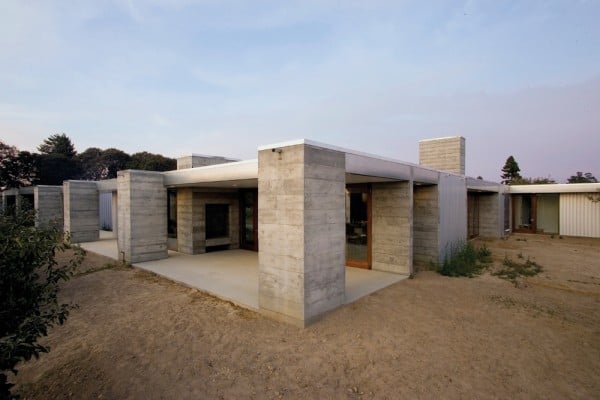
Nestled in a mature apple grove in Sebastopol, Sonoma County, California, the Orchard House is a highly site-specific, cast concrete prefab that has been designed by Anderson Anderson Architecture. This approach allows a high degree of adaptability to the landscape, while keeping construction costs to a minimum. The single-story, 4,500 square foot house is home to a family of four who moved here in 2003 from New York City. They could not leave their city life completely behind, they wanted to adopt elements of their loft into their new home in the countryside. The home needed to be completely accessible to their teenage son who gets around in a wheelchair. They also needed to accommodate two home offices and a study area to homeschool their son. They also desired plenty of space not only for cooking, but for massive kitchen projects such as wine making from their homegrown grapes and oil from their olive trees.
The central living space is open and airy, with a comfortable sitting area on one end and a dining table at the other and it between is a spacious cooking zone. The sleeping areas are set apart from the main room, along a sunlit corridor, which is lined with artworks by various family members. There are two “drive-in” bathrooms that feature open showers with long drains. The material used throughout the farmhouse was concrete. A series of identical C-shaped modules form the structural framework, which sits on a continuous slab foundation. To integrate the house into its surroundings, the wall line up exactly with the rows of trees outside, which are planted on a grid and spaced 25 feet apart. The result is expansive floor-to-ceiling glass doors that span the open alleys between the trees, which create endless views in every direction that tapers into the trunks and leaves.
The concrete extends into the interior spaces, which frames the large kitchen island, with custom niches for appliances and sinks. Accents materials consist of wooden doorframes comprised of reclaimed redwood wine barrels and galvanized steel siding on parts of the exterior. Minimal cabinetry and millwork is manufactured of raw Douglas Fir plywood. At the center of the main living area is a massive slab of salvaged cypress, resting on sawhorses with open shelving underneath. Throughout the interior spaces are open storage areas, no cabinets or drawers so that everything is wheelchair accessible.
The house lies low in a century-old apple orchard, far from neighboring houses. The spaciousness of the rural surroundings is echoed inside.
The wide front door opens onto a wide central living space where the entire family—and a regular cast of visitors—spends much of their time.
The dining room table sits at one end of the main room, with an open view onto the rows of trees that extend out from two sides of the house. A suspended fixture made out of a salvaged branch, crystal pieces, and strung bulbs by the homeowner.
A massive slab of cypress perched atop sawhorses provides storage for pots and utensils.
The cooking area features two islands—one more permanent than the other. A concrete island contains various appliances.
The Andersons designed a system of four-by-four-foot concrete modules, created from a reusable formwork of 2-by-12-foot boards that could be easily moved around the site.
By using the units repeatedly, the architects saved on cost and materials as well as scaling the work to be manageable with one concrete truck and a two-person crew. The resulting facades are textured from the rough wooden planks.
Ben’s office contains an impressive reference library for his inventory of antiquarian books.
An outdoor shower is made from one complete concrete module—a visual demonstration of how the entire house was built.
In the master bedroom, more shelves were installed to accommodate the book collection.
The long hallway leading to the bedrooms gets spectacular afternoon sun, lighting up the family’s many works of art.
In the living room fireplace, a bird turns on the antique French spit.
The outdoor hearth is primed for cooking in the summer.
The open office space is partially secluded thanks to the hanging Algues by Ronan & Erwan Bouroullec for Vitra.
Throughout the house all storage areas are open, leaving crockery, dishware, food, books, and clothes in plain view.
Ben enjoys spending time outdoors on warm days cooking meals for his family.
The oversize hearth (of which there is an outdoor double) was part of the original design specifications. “Ben said he wanted a fireplace big enough to cook a wild boar,” says Mark Anderson of Anderson and Anderson.
Metal buckets of wooden spoons on the counter don’t amount to visual chaos; rather, they’re evidence of a hands-on existence.
The family needed space not just for cooking, which they do a lot of, but for massive kitchen projects like making wine from their homegrown grapes and oil from their olive trees.
Many of the culinary craft projects are an extension of Ben’s work as an artist and dealer of antiquarian books about food and wine.
The material of choice for the loft-cum-farmhouse was concrete, for which the Andersons devised a prefab strategy. A series of identical C-shaped modules from the same formwork compose the structural system, which sits on a continuous slab foundation.
Photos: Anthony Vizzari for Dwell

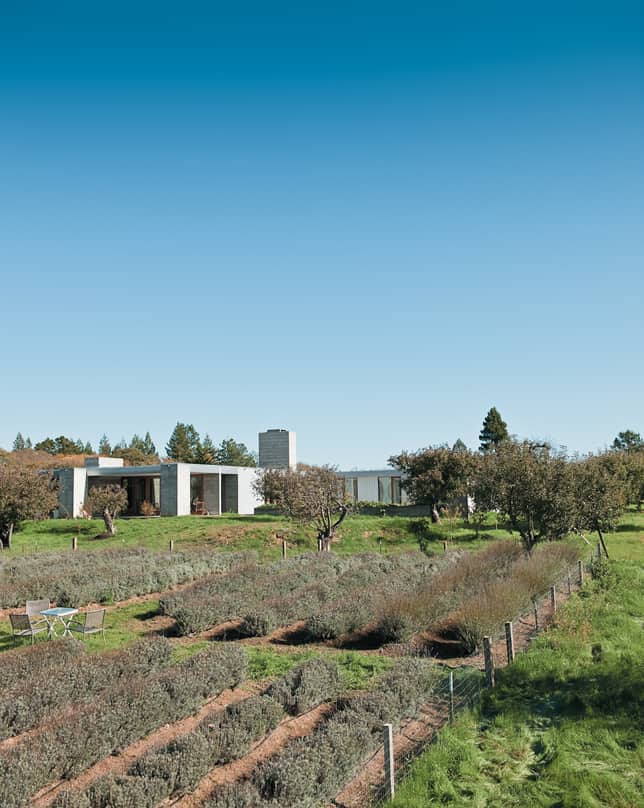
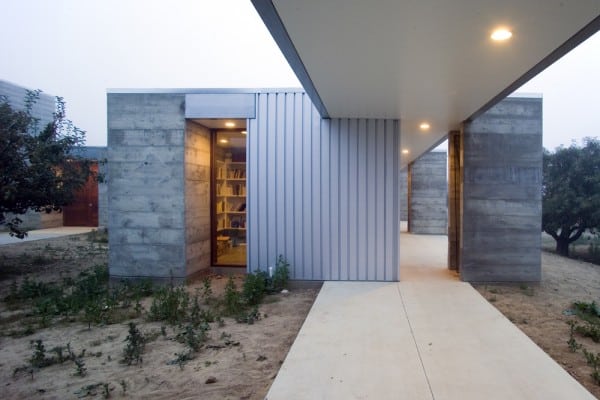
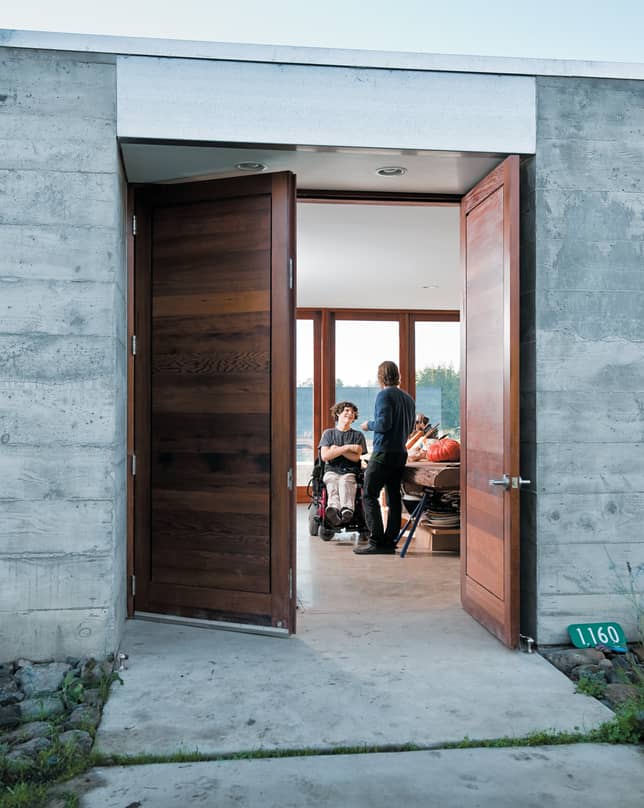
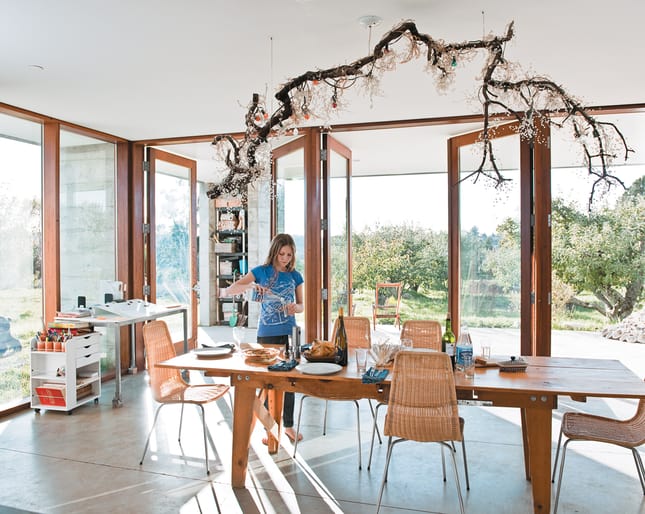
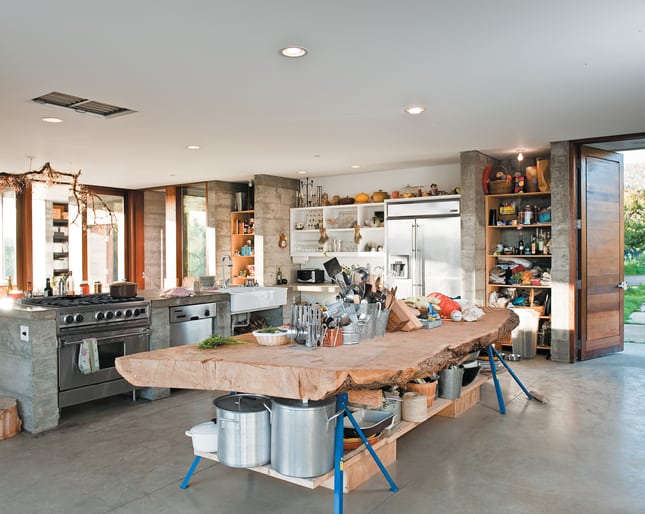
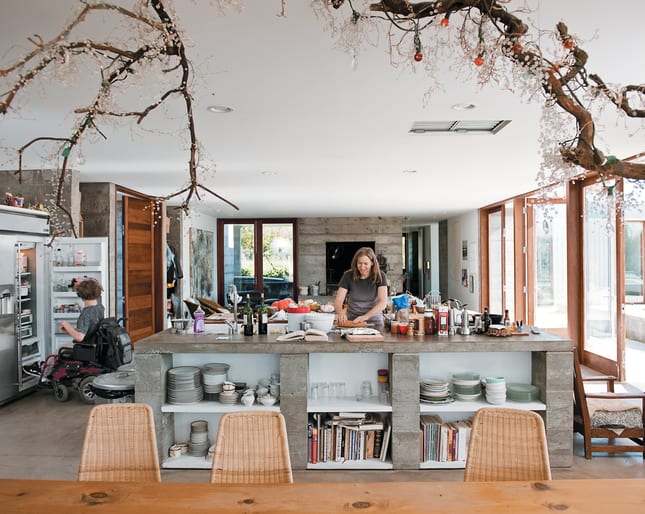
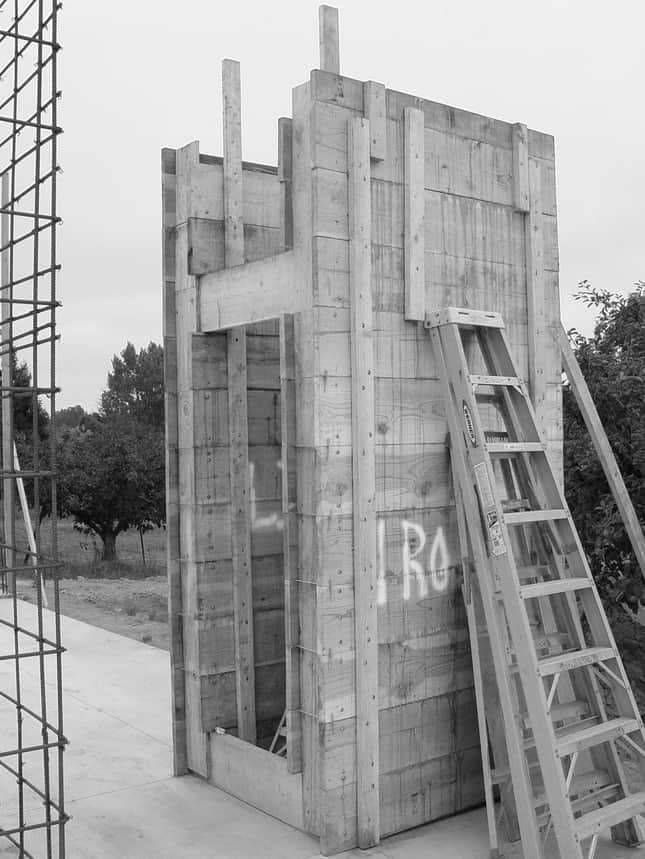
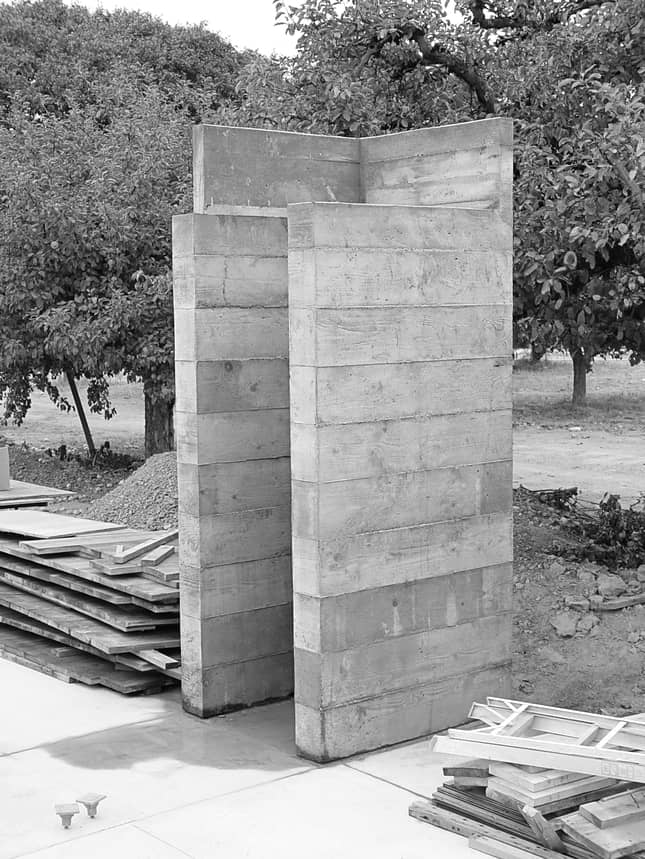

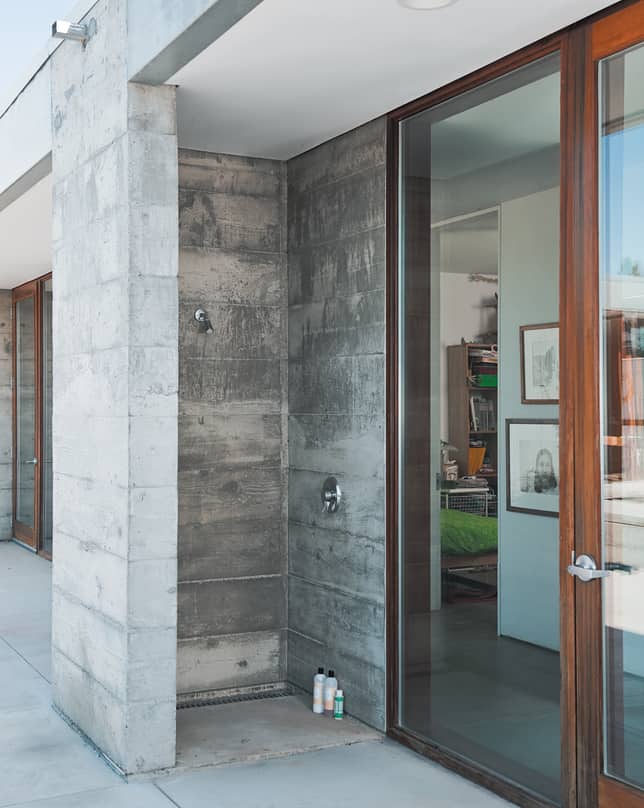
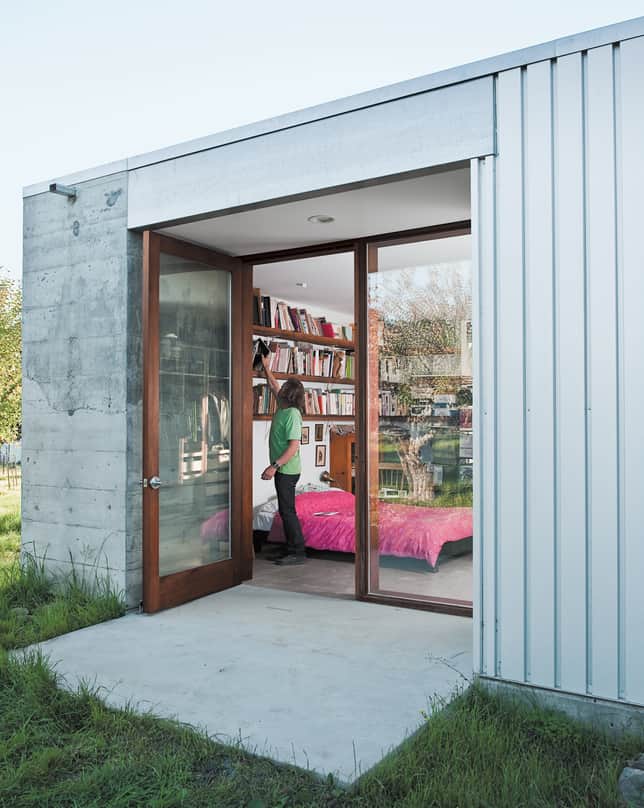

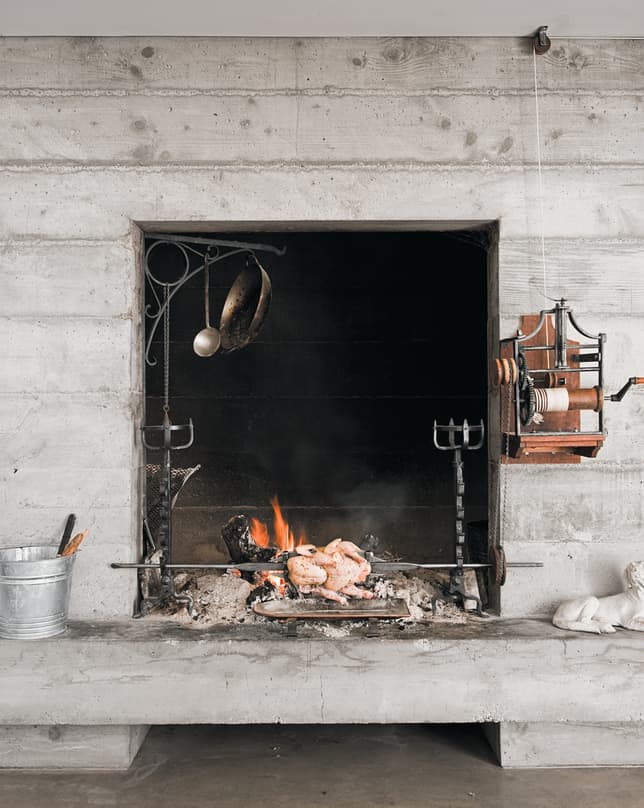
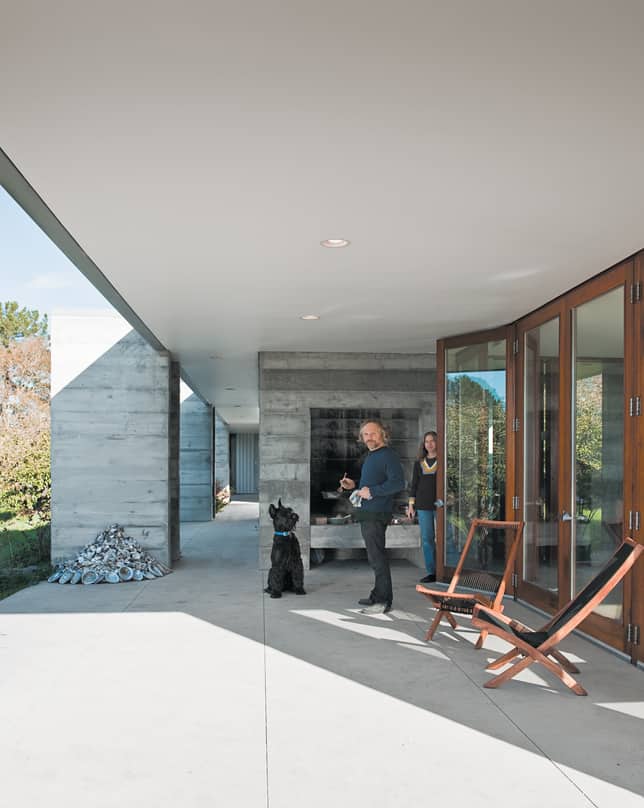
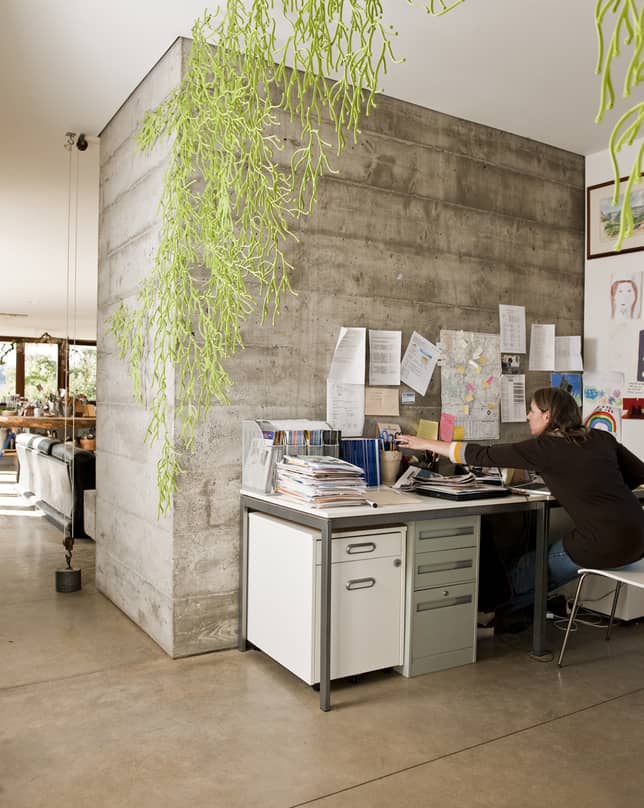
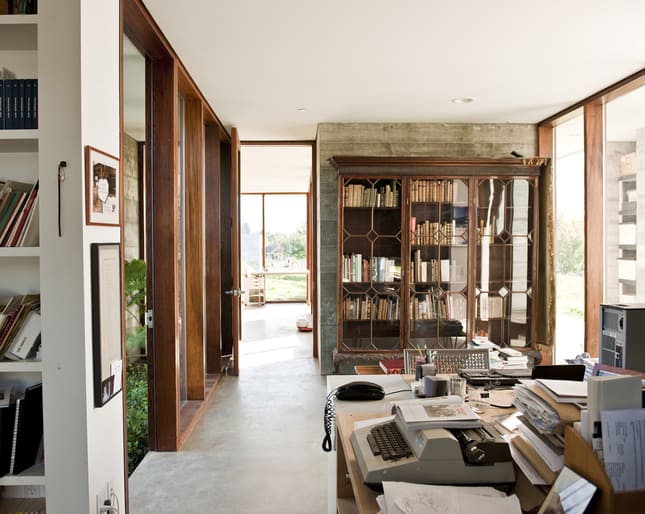
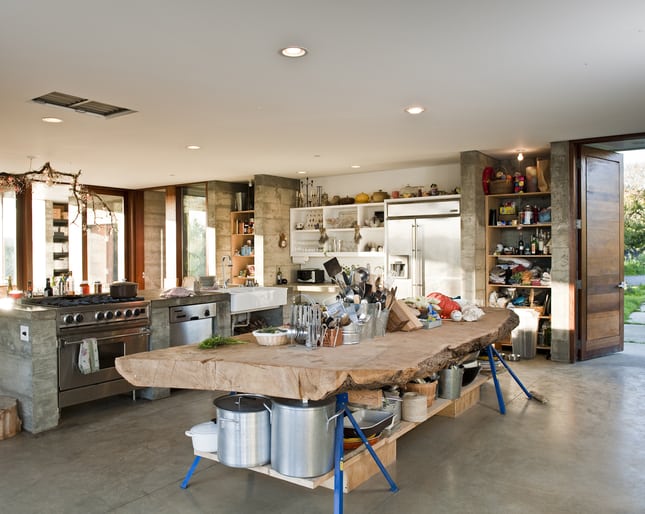
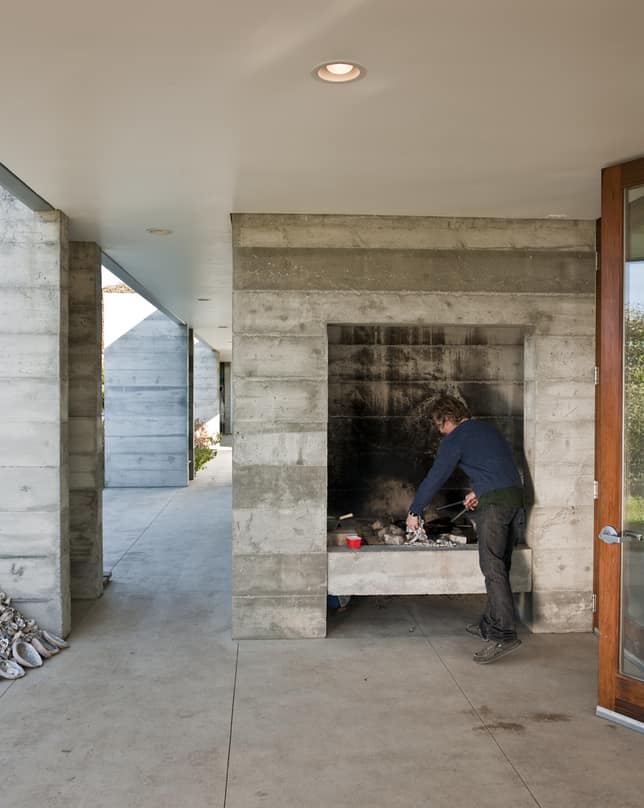


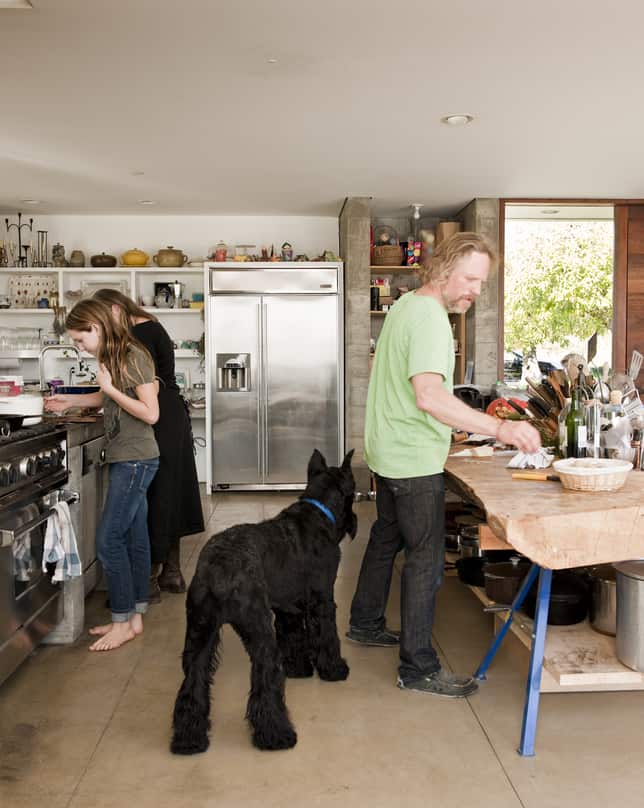
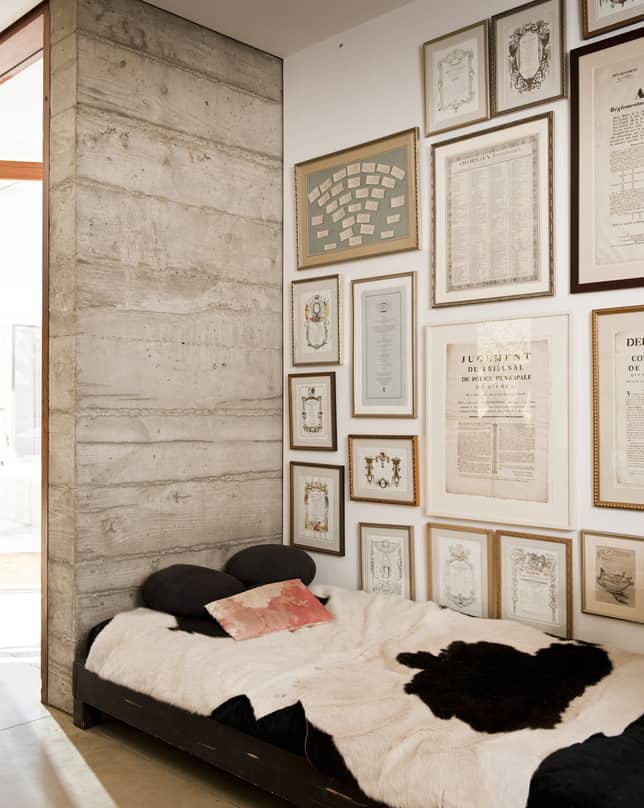
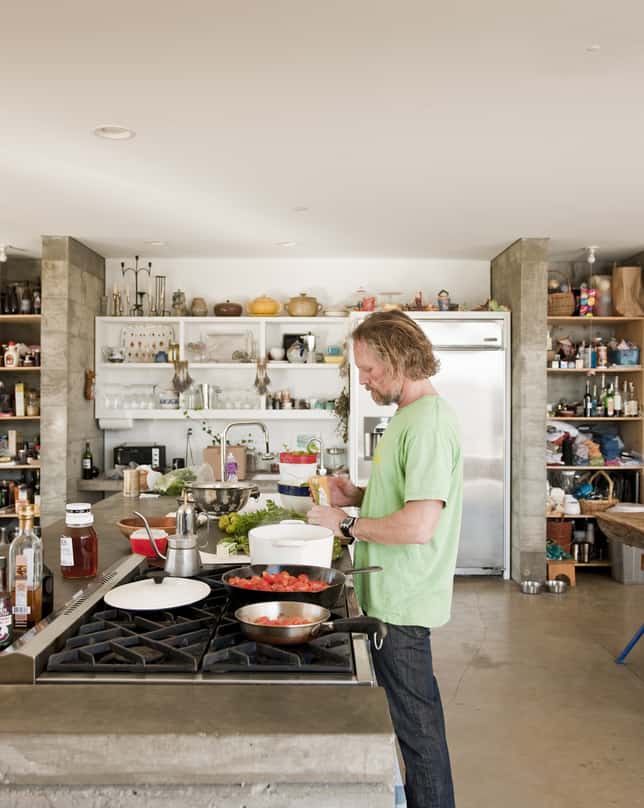
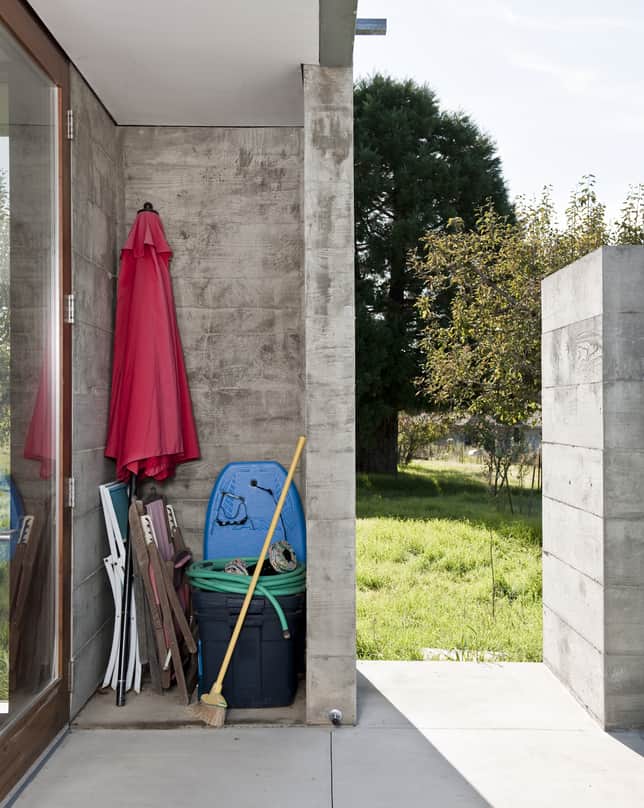
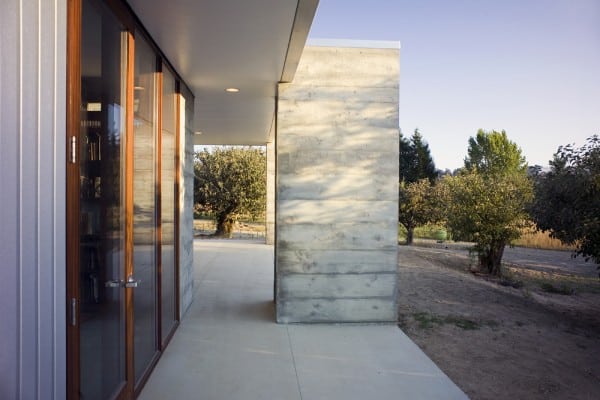

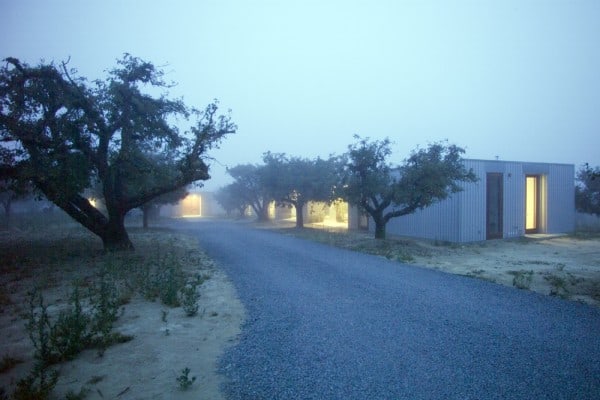
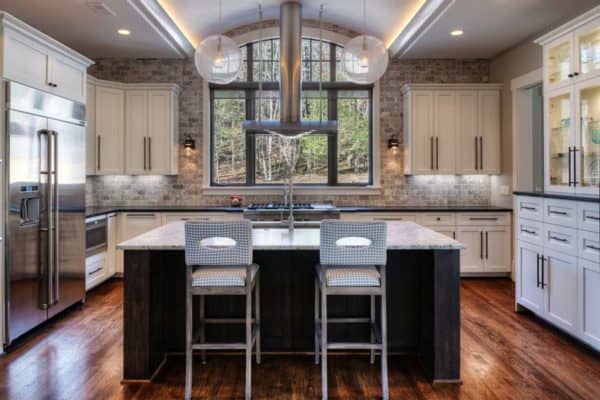
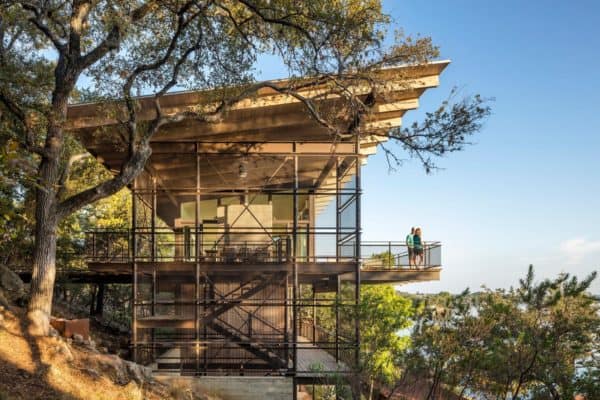
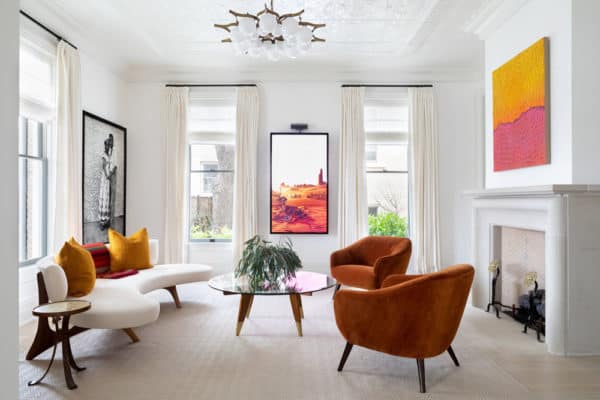
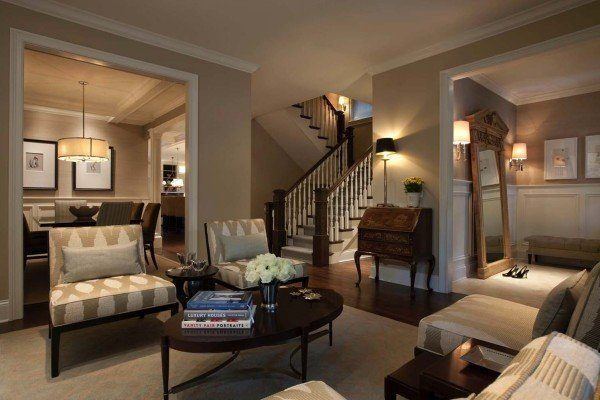
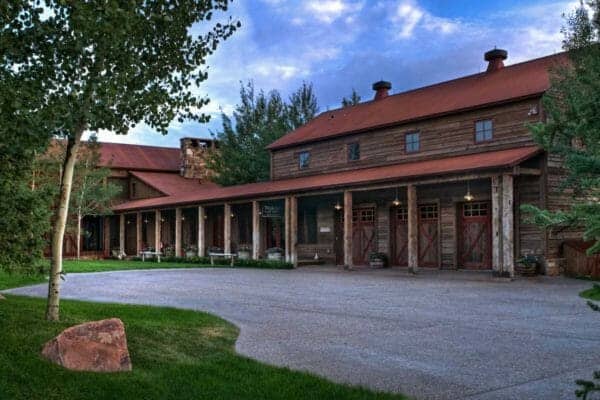

0 comments